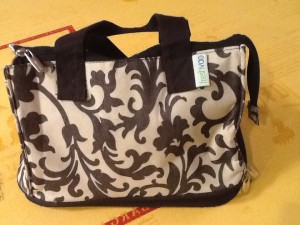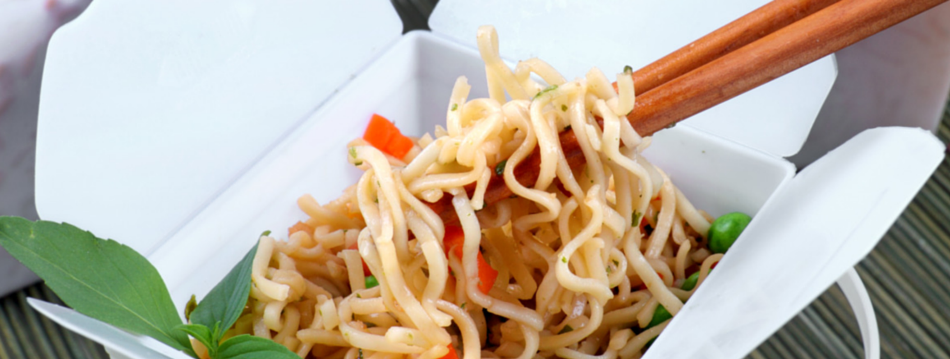 You may or may not think about what you’re putting in your lunchbox, or more specifically your child’s. A friend recently asked me about packing a chicken salad sandwich in her son’s lunchbox; was it safe for it to sit in that lunchbox for a few hours? I’ve written a few posts dealing with the risks of chicken in its raw state, but what about after it’s cooked? How long can it be kept at room temperature and still be safe to eat? Does mayonnaise make it spoil faster? Is salmonella still a concern? And most important, do I really know the answers to these questions?
You may or may not think about what you’re putting in your lunchbox, or more specifically your child’s. A friend recently asked me about packing a chicken salad sandwich in her son’s lunchbox; was it safe for it to sit in that lunchbox for a few hours? I’ve written a few posts dealing with the risks of chicken in its raw state, but what about after it’s cooked? How long can it be kept at room temperature and still be safe to eat? Does mayonnaise make it spoil faster? Is salmonella still a concern? And most important, do I really know the answers to these questions?
Food safety is (ideally) something that gets drilled into any and everyone working in any aspect of the food service business. If you go into any commercial food establishment they should have some sort of official certification posted for at least one individual who works there. One of the most common certifications is offered by the National Restaurant Association and is called ServSafe. I have been ServSafe certified numerous times, and have gone through food safety and sanitation classes so many times I could write a book—oh wait, I have! But this post is about sharing information, not self-promotion.
Lunchboxes are a good place to pay attention to food safety because they are likely sitting at room temperature for hours, and you don’t want to make your child (or yourself) sick with the lunch you lovingly prepare each day. Many people still believe that mayonnaise accelerates food spoilage, but in fact, if you’re using commercially prepared mayo it slows down bacterial growth (though I must say emphatically, commercial mayo is not an effective substitute for refrigeration!). If no refrigeration is available thermal lunch-bags packed with cold items should keep food safe for several hours, and if you add a freezer stick that is even better.

When making salads with chicken or something canned (like tuna) it is really important to start with cold ingredients, so make sure you put that can of tuna in the fridge overnight, and don’t start with a new jar of mayo, those warm items can support bacterial growth like crazy! When packing lunchboxes put the most perishable item at the bottom, next add whatever device you’re using to keep things cold (I have been know to use a zip close plastic bag filled with ice, but be careful, they often leak) then anything else that needs to be cold or cool, then whatever is left. The more cold items in the bag, the longer it will stay cold, and it’s better to pack it well, than leave lots of air space.

Cooked chicken is no more or less dangerous for a lunchbox than any other cooked protein (including canned tuna). Once the chicken has been thoroughly cooked (to an internal temperature of 165°F) any salmonella bacteria has been destroyed. All food though has some active bacteria present, and refrigeration doesn’t stop that growth, though it slows it down significantly. Once you remove something from refrigeration, as the product gets warmer, that bacterial growth starts to speed up, eventually reaching a point of doubling every hour. It is recommended to discard food that has been above 40°F for more than four hours, but that food you packed in the cold bag will take a while before it gets to that point.
It doesn’t take much to make that lunchbox or bag and its contents safe. Some lunch bags now even come with something you can keep in your freezer then put is a compartment meant to hold it. You may also want to check where that bag gets stored, and make sure it’s not near a heat vent! Nothing beats a great home-made lunch, packed with care and caution. Bon Appetite!





.jpg)





Adam Kamerer - I think this is one of the reasons why a good insulated lunchbag is such an important purchase. You want one that’s easy to clean, seals well, and keeps its contents cold for hours.
nrlowell@comcast.net - So true!
What’s in Your Lunchbox? | The Bloppy Blo... - […] A friend recently asked me about packing a chicken salad sandwich in her son’s lunchbox; was it safe for it to sit in that lunchbox for a few hours? […]
Erin Owen - Wow, Nancy, it’s like you read my mind! I worry about the safety of the food in my boys’ school lunches since they do not refrigerator the lunch boxes at their schools. Thanks for sharing these important facts!
Janet Wheelock Balsbaugh - Interesting
Liz Kinder - I cook stuff and put it in a thermos. Soup stays warm, but sometimes I”ll cook a hamburger and throw it in there with some ketchup, and then he can pop it in the bun at lunch. I’m sure it cools down because of the air and the ketchup. It’s been fine so far, but how long do you think it would take to grow yucky? Would it be smarter to not have it in the thermos and be cool next to the ice pack? Thanks for the article.